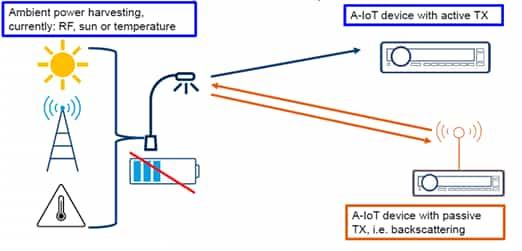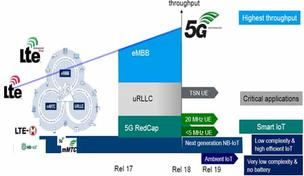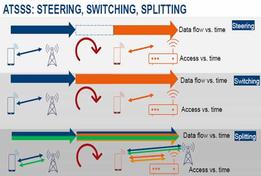Ambient IoT (A-IoT): Features, Benefits & Limitations
Advertisement
Introduction : Ambient IoT (A-IoT) technology also referred as “Zero Power IoT” has been developed to deliver a new class of ultra-low power Internet of Things (IoT) devices. The core concept is to enable massive numbers of simple devices to operate without a battery by harvesting energy from their surroundings. It represents a paradigm shift in wireless technology.
Features of Ambient IoT
- Energy Harvesting Principle: The foundational feature of A-IoT is its ability to operate by scavenging power. There are three primary ambient sources which can be utilzied by A-IoT devices to harvest energy.
- Radio Frequency (RF) Energy: Harvesting energy from ambient radio waves, such as those from cellular base stations or dedicated RF transmitters.
- Solar Energy: Drawing power from light sources.
- Thermal Energy: Converting temperature differences into electrical energy.
- Passive and Active Transmission: A-IoT devices can communicate in two main ways as follows.
- Passive Transmission (Backscattering): This is the most common method mentioned. The device doesn’t generate its own radio signal. It takes an incoming RF signal (from a base station or “reader”), modifies it to encode its data, and reflects it back. This method requires minuscule amounts of power, making it ideal for batteryless operation. The device acts like a digital mirror.
- Active Transmission: More complex A-IoT devices may have a small energy storage unit and can perform a low power active transmission.
- Varying Complexity Levels: The 3GPP study categorizes A-IoT devices into different types based on varying levels of complexity and power consumption.
- Device 1 (Simplest): Has small energy storage, uses only backscattering (no amplification), and consumes around ~1μW.
- Device 2a (Intermediate): Includes an amplifier for the backscattered signal, has energy storage, and consumes around ~100μW.
- Device 2b (Advanced): Has energy storage and active RF components for independent transmission, consuming a few ~100μW.
- Communication Scenarios and Link Types: Following are the ways A-IoT devices can communicate.
- Reader to device (R2D): Similar to a 5G downlink, where a base station or reader sends signals to the A-IoT device. This signal can also be used for energy harvesting.
- Device to reader (D2R): Similar to a 5G uplink, where the device communicates back to the reader, typically via backscattering.
- Simple and Efficient Physical Layer : The PHY layer for A-IoT is based on a simple On-Off-Keying (OOK) waveform, which is energy efficient and straightforward to implement. This method is analogous to sending Morse code with light—the presence of a signal represents a binary one (“1”) and its absence represents a binary (“0”) making it incredibly efficient and easy for a low power device to process.
 Image Courtesy : Rohde & Schwarz
Image Courtesy : Rohde & Schwarz
Use cases
- Supply Chain: Tracking individual items in warehouses and logistics.
- Retail: Smart labels on products for inventory management.
- Patient Care: Disposable or wearable sensors for health monitoring.
- Automotive: Sensors embedded within car components.
- Smart Home: Integrating simple sensors into everyday objects.
- Consumer: Smart packaging and other simple connected items.
Benefits of Ambient IoT
Following are some of the advantages of Ambient IoT :
- Very Low Complexity & Cost : The simple design and lack of a battery make these devices extremely cheap to manufacture, enabling massive scale deployments.
- No Battery / Maintenance Free : The primary benefit is eliminating the need for batteries. This means devices can be deployed in hard to reach places and left for years without needing maintenance for battery replacement.
- Miniaturization: Without the bulk of a battery, A-IoT devices can be made very small and integrated into a vast range of objects such as labels, packaging or even embedded within materials.
Challenges of Ambient IoT
Following are some of the limitations of Ambient IoT :
- Dependence on external power source : A-IoT devices rely on harvesting energy from their environment. If the ambient energy source (e.g., a dedicated RF signal) is not present or is too weak, the device cannot operate.
- Limited Communication Range : Backscattering is a low power communication method, which inherently limits the range over which these devices can effectively communicate.
- Simple Functionality : The low power and low complexity design means these devices are only suitable for simple tasks, like sending small amounts of data (e.g. ID, temperature reading). They cannot perform complex computations.
- Half-Duplex Collision Issues (for NTN) : Collisions between transmitting (TX) and receiving (RX) signals can occur, especially with long delays, requiring careful scheduling to manage. This is a potential challenge for more advanced A-IoT-like devices.
Summary: Unlike traditional IoT systems that rely on powered devices and dedicated gateways, Ambient-IoT uses ultra-low power or energy harvesting components such as battery free tags, sensors and chips. These components communicate seamlessly via ambient radio signals (e.g., Bluetooth, cellular or RFID). This enables continuous, scalable and cost efficient tracking, monitoring and automation across supply chains, smart homes, healthcare, and industrial systems, transforming the physical world into a network of self aware, interconnected entities.
- References: TR 38.769 - 3GPP Study on Ambient IoT , REL. 19.
- Current Status:(Oct. 2025) Ambient IoT is actively being standardized with work items in Release 20.
Advertisement
 RF
RF




